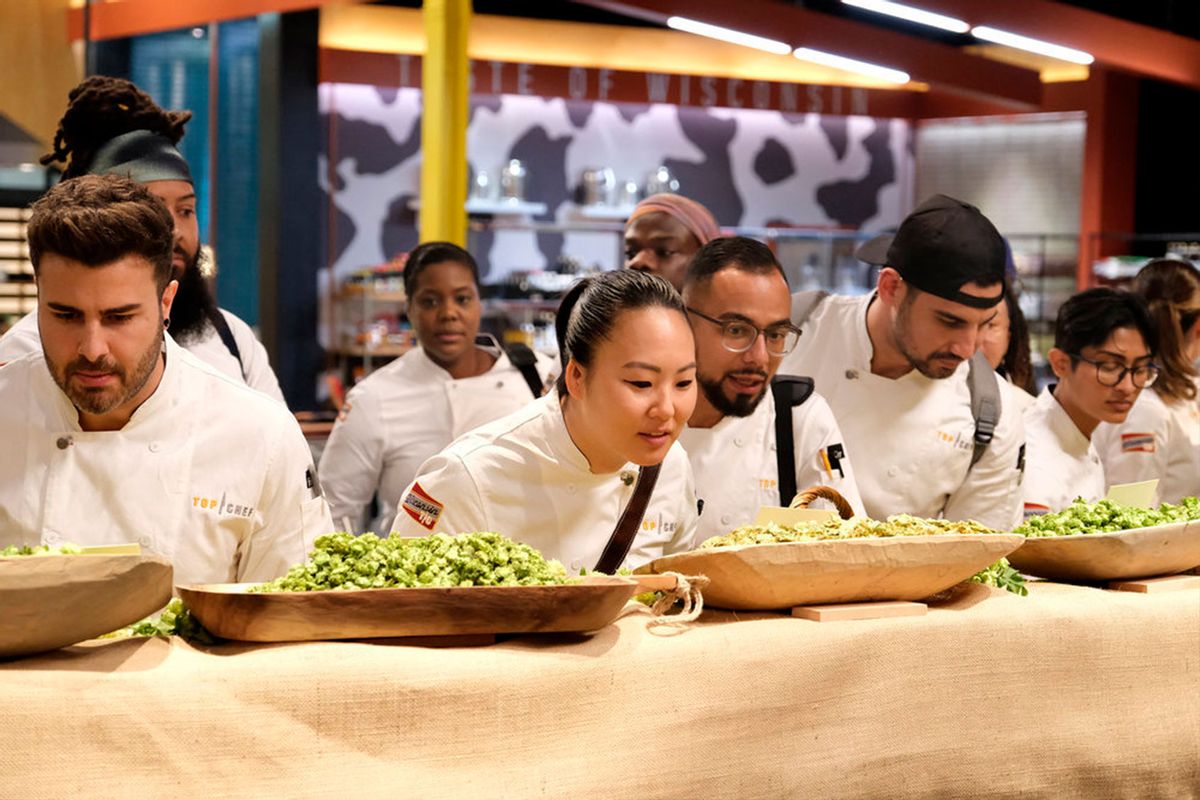The inherent notes in coffee, the subtle flavor of anise or fennel, incredibly dark chocolate, the sharpness of arugula, the unique flavor of broccoli rabe, a particularly pucker-y grapefruit, endive, radicchio, rhubarb, Aperol, citrus — despite being a note many fear, bitterness plays a role in so many ingredients but is so rarely harnessed to elevate dishes, no matter if sweet or savory.
That's one of the reasons why, in this week's "Top Chef" Quick Fire challenge, the cheftestants were asked to prepare a dish with hops, one of the primary building blocks of beer. Although you’re probably not going to be using hops in your next meal, that doesn’t mean you shouldn’t harness bitterness and its often underrated culinary capabilities.
Now, don't get me wrong: Too much bitterness is decidedly not good, veering into acrid or becoming generally unpalatable. But when there’s a touch of it in a dish, it can be a beguiling, alluring flavor component, especially when it plays in contrast to other flavor notes. You just need to be sure to have a light hand. "A little goes a long way" is perfect when applied to using bitterness in a balanced manner.
In this piece from Jenny Dorsey with the Institute of Culinary Education, she writes that "bitterness is a critical component of building intensity and complexity of flavor, but here in the U.S. we often shy away from using bitterness to accentuate our food." She recommends "sprinkling a warm, rich, bitter ingredient like cacao powder on top to finish a dish versus braising meat in a juicy but tannic red wine for hours feels different because the ingredient's bitterness reaches our tongues in varying stages when eating."
From a scientistic perspective, bitterness is perceived by one of the taste bud receptors at the back of our mouths, per Dorsey, which may have developed as a protective mechanism to prevent people from consuming anything poisonous or harmful.
Want more great food writing and recipes? Subscribe to Salon Food's newsletter, The Bite.
Furthermore, as registered dietician Amy Fischer tells Zee Krstic at Good Housekeeping, bitterness is also a tool that can help to "revolutionize your gut health," helping with everything from digestion and constipation to bloating and irregularity. She specifically highlights grapefruit, cacao, cranberries, coffee and more as everyday, commonplace ingredients you can incorporate more into your dishes or diet for both boosts in flavor and health. Over at NBC News, integrative health expert Taz Bhatia likens bitter foods to prebiotics and how they impact the gut and microbiome overall.
This piece from Meher Mirza in Saveur acknowledges India's embrace of "beautifully bitter flavors," writing that "The subcontinent’s many bracing ingredients are essential to its cultures, cuisines, and traditional medicines." Mirza also writes that "the brace of bitterness that sluices our taste buds is these ingredients’ most enduring appeal," which pretty much sums up the whole appeal, does it not?
If you do like the flavor, though, why not make a broccoli rabe pesto? Why not incorporate some coffee grounds into baked goods? Why not make cocktails (with or without alcohol) with Aperol or other bitter flavors? There are so many options, often with items you probably already have on hand.
Don't shy away from it; you never know what embracing bitterness might do for your own home cooking.
We need your help to stay independent
Top Chef Takeaways, episode 2:
- Warning: Rant incoming. No offense to Tom, Soo or Valentine, but I quite literally couldn’t focus on Last Chance Kitchen because I was frantically scanning the internet to find out where in the world is David Murphy? Why was he not even mentioned? His absence was glaring and bizarre. I am almost annoyed whenever a character inexplicably goes missing and there is no mention from the show itself, no matter if it's Judy Winslow on "Family Matters" or a random reality show contestant. And it turns out we may need know. In an Instagram comment, Murphy simply wrote the cryptic message: "I wasn’t allowed to participate, beyond that I can’t say anything else… NDAs."
- Was I hallucinating or were the guests at the elimination challenge never actually introduced? I'm sure Kristen still did it, but maybe it was edited out which seems like an odd change and I hope that thats not gong to be a permanent format shift. I found it jarring how the entire table would immediately guffaw at everything that one man said until I realized that he was apparently a comedian.
- We're starting to see a clear distinction between the chefs on the red team, who have been more outwardly "lauded" by the industry at large, and the chefs on the yellow team, who are more like the underdogs. Interestingly enough, a classic David versus Goliath narrative played out this week as the yellow team pulled out the win — but will this streak continue? Will cheftestants like Alisha — who is self-taught and identified the "fine dining versus rustic" disparity on display this season — happen to topple the Michelin-starred and James Beard nominated cheftestants? Perhaps! We shall see.

Shares